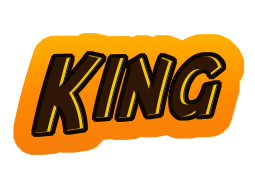
Whale Eyes: A Memoir About Seeing and Being Seen by James Robinson, illustrated by Brian Rea (Penguin Workshop, 304 pages, grades 6 and up). James Robinson was born with strabismus, or misaligned eyes. He shares with readers how this affected him in school, both his struggles with reading and the reactions of others, whom he addresses as “Starers.” He grew up to be a documentary filmmaker, and the book is based on a short film he created for the New York Times to help people understand how he perceives the world. The book has some visuals and activities from the film, giving kids an opportunity to get some idea of how James sees things. The last part is more of a memoir, telling how his mom creatively homeschooled him and his older brother who had dyslexia, helping them to pursue their passions and succeed. Includes a list of citations.
Readers will learn a lot about what it takes to succeed when you have a disability, and James (and his mom, who sounds amazing) offer inspiring lessons about persevering when it feels like there is little or no progress. The illustrations are very cool and an excellent aid in understanding James’s condition. The book felt a little disjointed, with the last part feeling quite different than the rest of the story.

We Are the Scrappy Ones by Rebekah Taussing, illustrated by Kirbi Fagan (Carolrhoda Books, 32 pages, ages 4-8). This celebration of people with disabilities portrays a diverse group of kids and adults with all kinds of disabilities. Whether they’re in a wheelchair, walking with a white cane or a guide dog, or getting some sort of medical treatment, they are shown dancing, playing, making art and music, and always surrounded by others, sharing a sense of belonging. They are celebrated for adapting and overcoming difficulties and accepting help without thinking of themselves as a burden. All of this can be exhausting, and resting and taking care of yourself are also encouraged. A two-page spread near the end portrays several inspiring disability activists, with information about each in the back matter. There are also notes from the author and illustrator, who both drew on their experiences growing up with disabilities to create this book.
I was glad to find this book just as I was finishing up Whale Eyes, and it seemed like it would have been super helpful to James Robinson after hearing of his struggles with the label “disability” to describe his vision. This beautiful poem will inspire and reassure kids with disabilities, as well as their peers, but I think they will be especially drawn to the illustrations that portray so many different types of people living life joyfully and in community. The notes at the end about the author’s and illustrator’s experiences add an extra dimension.

Catty Corner Lands on Her Feet (Catty Corner, book 1) by Julie Murphy (Union Square Kids, 128 pages, grades 1-4). Like her mother, Catty is half-cat, half-human (Dad’s just a regular person), and she’s been homeschooled all her life, never having to worry about containing her feline instincts. But when her mom gets a job, it’s time for Catty to try school. She’s nervous, but also excited about the possibility of making new friends. Her first day is something of a disaster, in which she shreds a map when her teacher uses a laser pointer and bites a potential new friend when someone steps on her tail. Back home, Mom shares her mother’s and her own childhood diaries, which show some of the cat-astrophes they experienced. Catty’s able to return to school the next day with new confidence and learns that she can fix her mistakes and contribute with her own unique talents. Book 2 was published simultaneously.
This may seem like a strange choice for this post–and honestly, it’s one of the more bizarre premises for a book series that I’ve come across–but I was struck when reading it how Catty is different from her classmates in ways that are similar to kids with disabilities. She faces stares and mean teasing and has to work extra hard to fit in with a body that’s different from her classmates’. It could make an excellent starting point for some interesting discussions with primary elementary kids.
